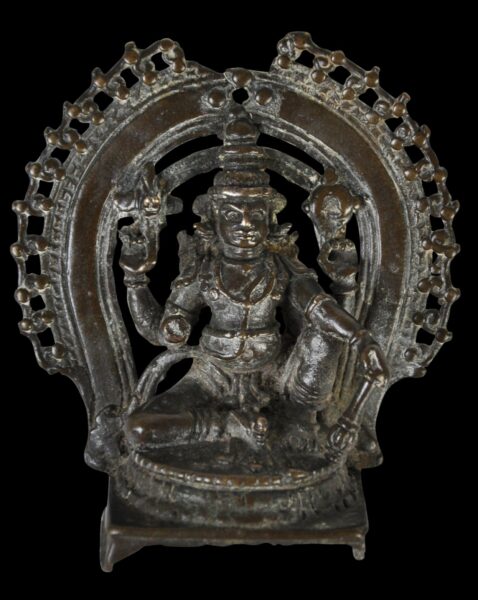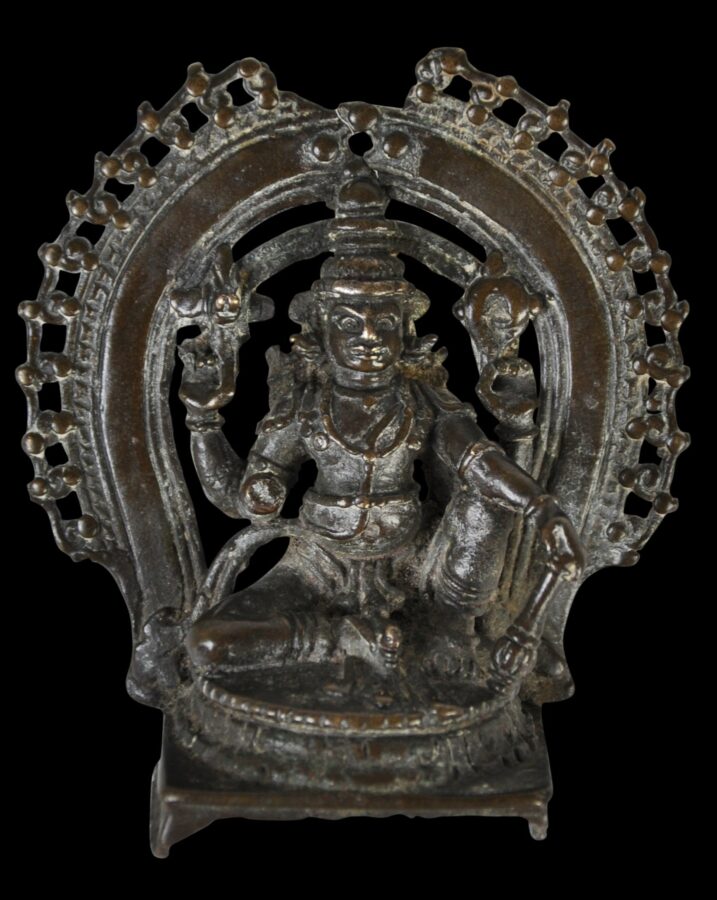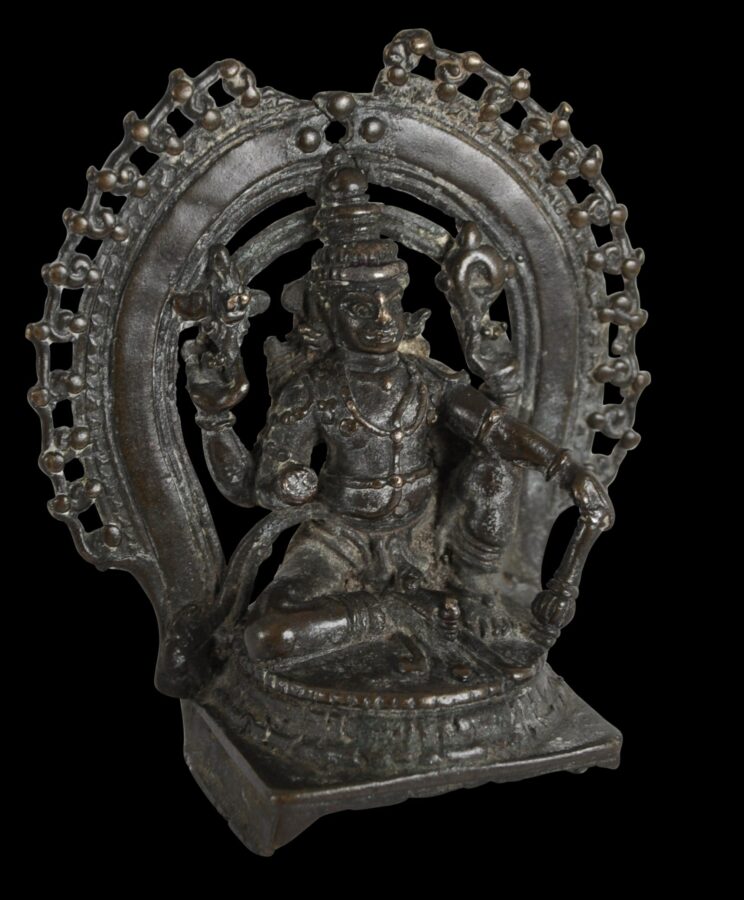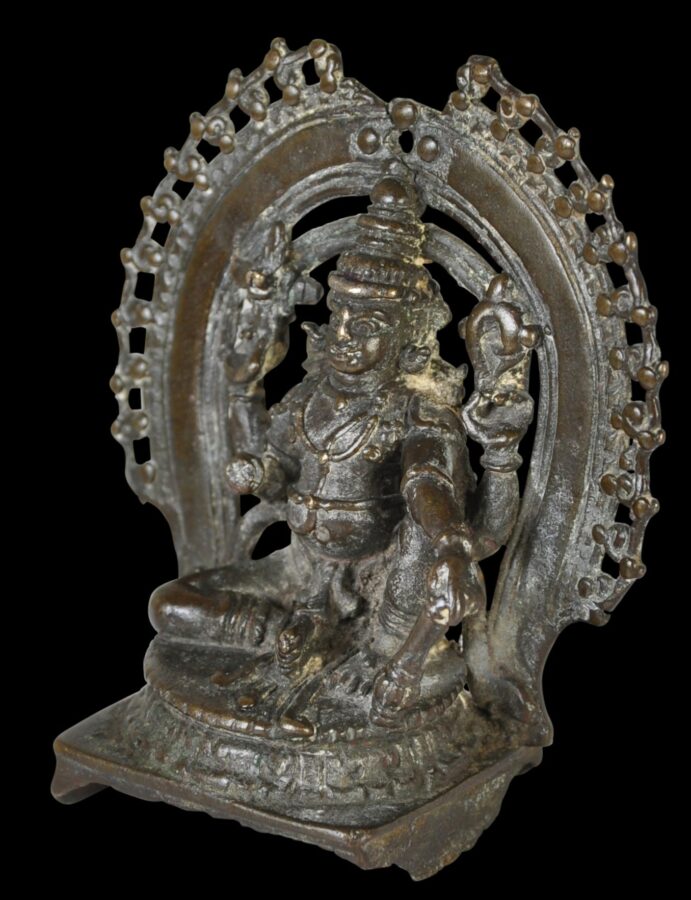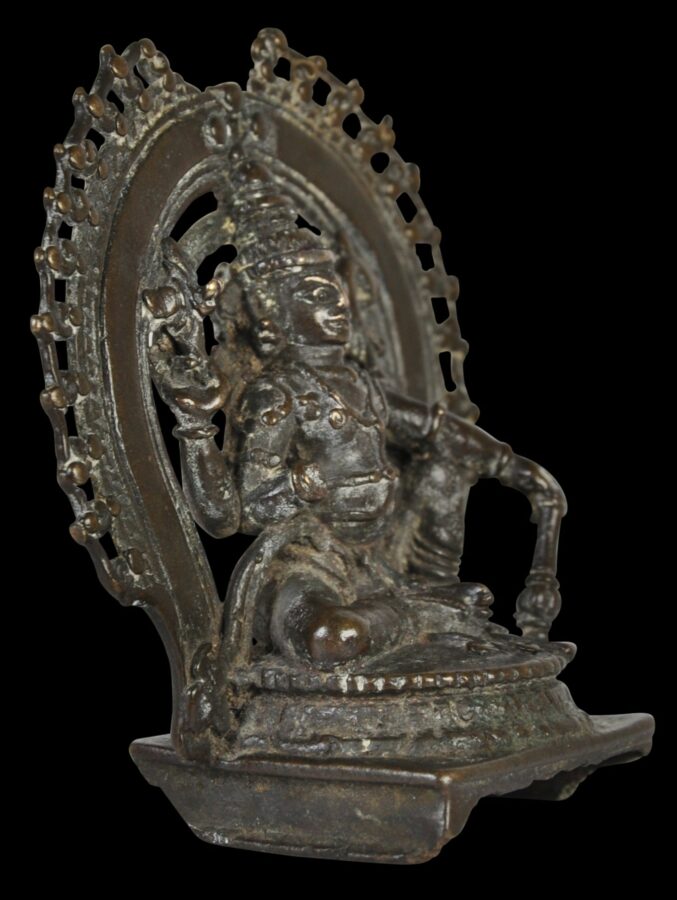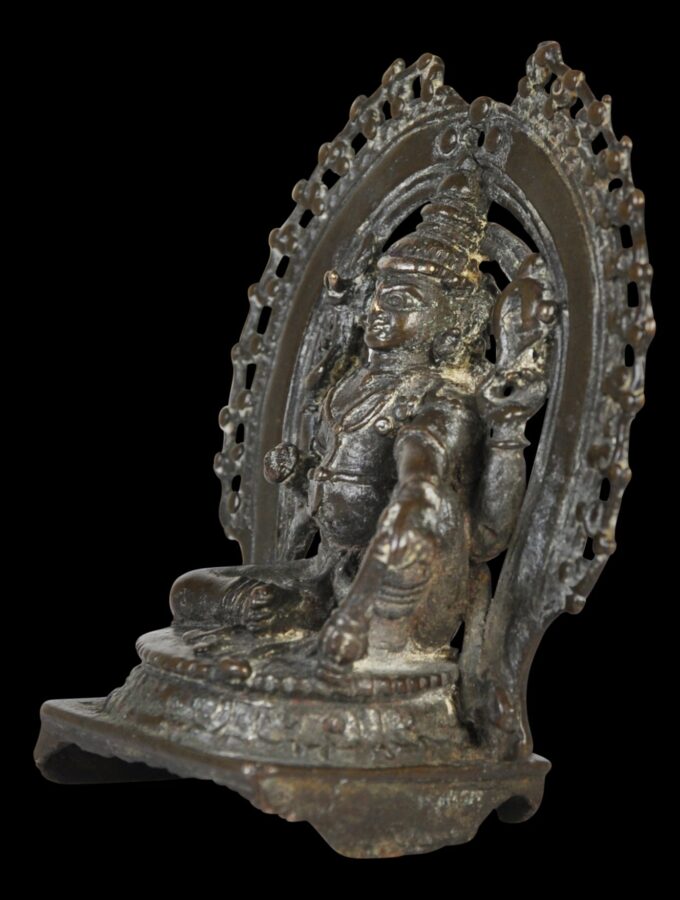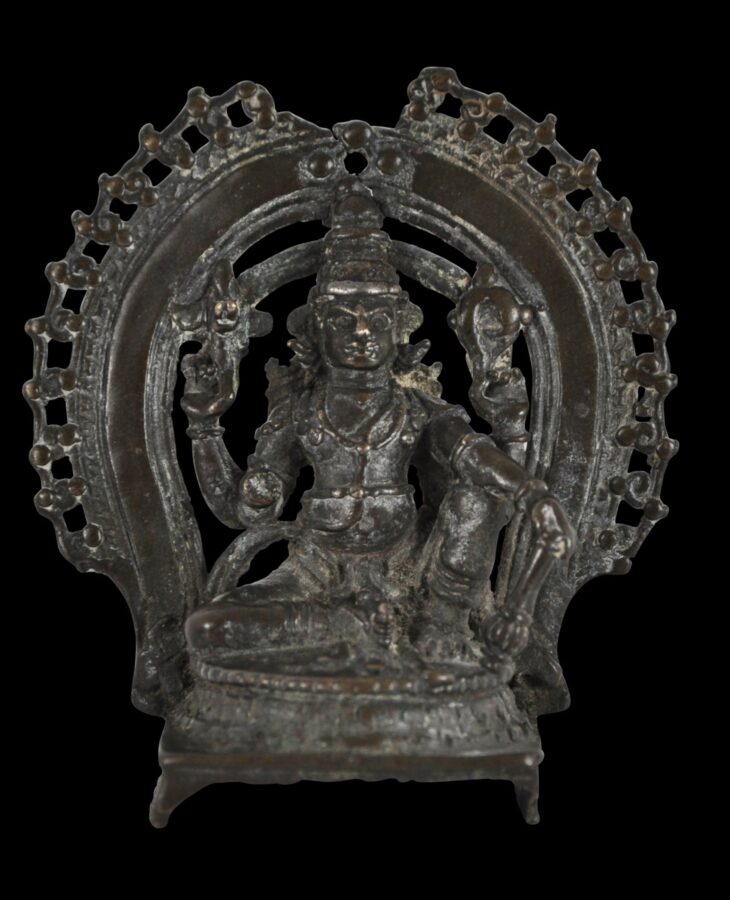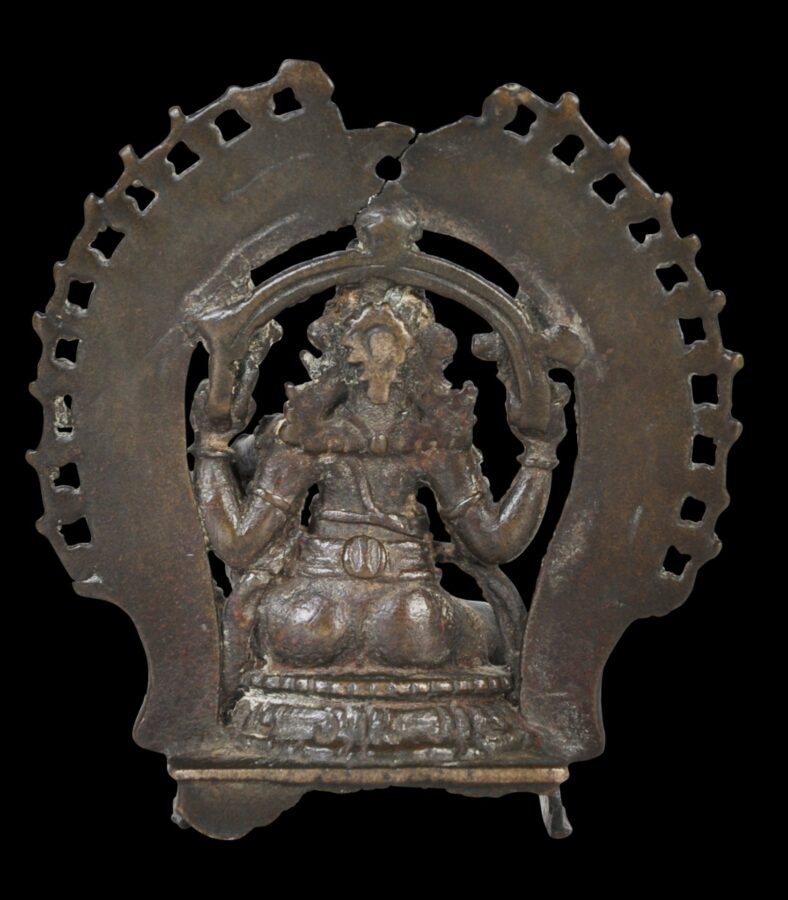This early image of Vishnu shows the deity seated in lalitasana on a lotus petal roundel atop a rectangular platform.
Vishnu holds in one of his four arms a kaumodaki, which is the name given to the mace or gada when it is in Vishnu’s possession. The other hands hold a conch or chanka, and a lotus or padma. A fourth arm is no longer present.
The deity wears ample jewellery and a high, tiered crown.
There is a rounded, pierced aureole behind Vishnu.
The manner of construction and composition seems to draw on the Chalukyan period of art in Western India with the luxuriant decorative elements, the voids around the central figure, and the rendering of the kaumodaki.
The bronze has a very dark patina, and obvious antiquity. There is an obvious, and old loss to the top of the aureole. One of Vishnu’s arms is missing and the base has losses. These losses seem almost as old as the bronze itself.
References
Pal, P., The Peaceful Liberators: Jain Art from India, Thames & Hudson/Los Angeles County Museum of Art, 1995.
Sivaramamurti, C., South Indian Bronzes, Lalit Kala Akademi, 1963.


